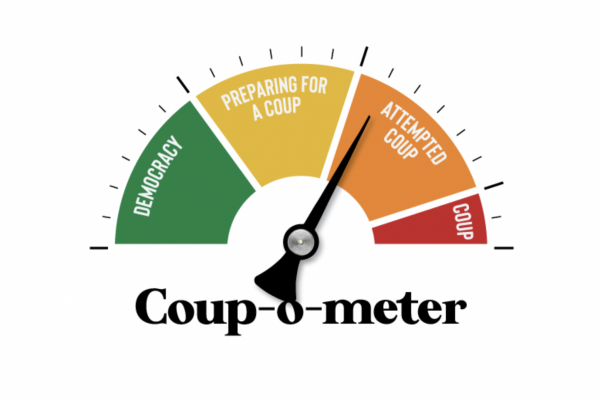Jan 6, 2021
In the months prior to the November 2020 election, progressive activists Jethro Heiko and Nick Jehlen partnered with Choose Democracy to create the Coup-o-meter in order to provide clear communication about how close the U.S. was to an anti-democratic usurping of power. By Wednesday afternoon, they had shifted the meter.
Read the Full Article

Already a subscriber? Login
